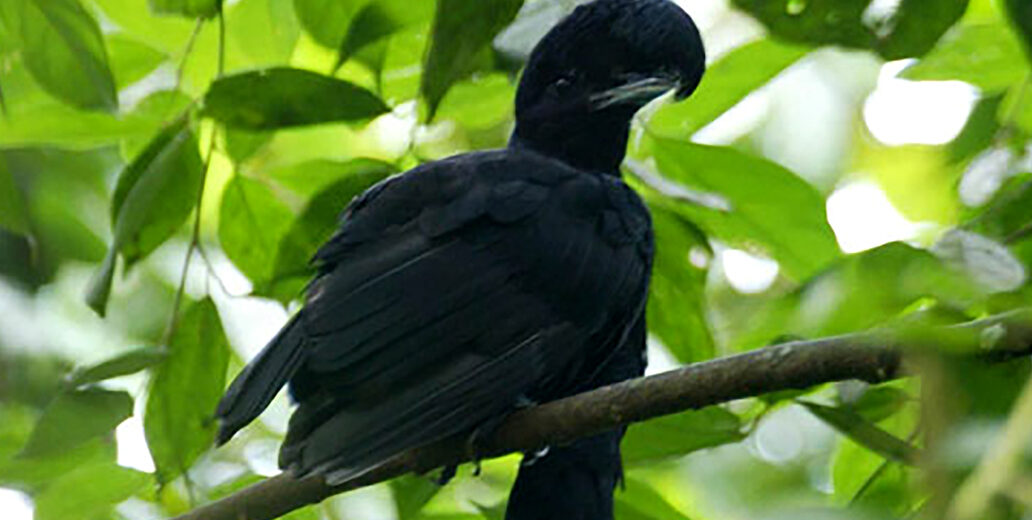
The long-wattled umbrellabird, aka Pájaro Bolsón, Pájaro Toro, Dungali, and Vaca de Monte, is a passerine (perching or song bird) that can be found in Equador and Colombia. There are 3 known species of these cotingas. But we’ll be focusing on the long-wattled species. They prefer humid to wet premontane and cloud forest environments. These birds are most notable for their umbrella-like crest and for their long, inflatable wattle. With only an estimated 15,000 remaining, these birds are listed as Vulnerable by the IUCN. Their numbers are decreasing due to habitat destruction at the hands of logging, residential and commercial development, roads, and mining. Climate change is also to blame. This article is on special request from Jon.
First the Stats…
Scientific name: Cephalopterus penduliger
Weight: Up to 17 ounces
Length: Up to 16 inches
Wingspan: Up to 28 inches
Lifespan: Up to 20 years
Now on to the Facts!
1.) The inflatable wattle is used in courtship displays.
2.) While the long-wattled umbrellabird can fly, they are rather awkward and slow in the air, so they only do so for short distances. They prefer to hop from branch to branch.
3.) These birds are primarily frugivores that eat the fruits of the Arecaceae, Lauraceae, and Myrtaceae. However, they will also take insects and small vertebrates, like lizards and amphibians.
4.) They are important seed dispersers, as the fruit they eat ultimately passes seeds to new areas.
5.) Umbrellabirds are prey to monkeys, snakes, and large birds of prey, like harpy eagles.
But wait, there’s more on the long-wattled umbrellabird!
6.) A group of umbrellabirds is called a lek.
7.) During mating, males come together in a common area (called a lek) to show off for the female. They will call loudly, hop about, and inflate their wattle.
Did you know…?
The wattle is able to amplify their already loud call. Umbrellabirds produce one of the deepest songs among passerines (less than 300 Hz). This call sounds like a didgeridoo.
8.) Female long-wattled umbrellabirds pick the male to mate with that shows the most territorial behavior and aggression.
9.) Females lay a single egg which hatches in about 28 days.
10.) The female is responsible for building the nest, incubating the egg, and rearing the young.
Now a Short Long-Wattled Umbrellabird Video!
Be sure to share & comment below! Also, check out the Critter Science YouTube channel. Videos added frequently!
Want to suggest a critter for me to write about? Let me know here.




Leave a Reply